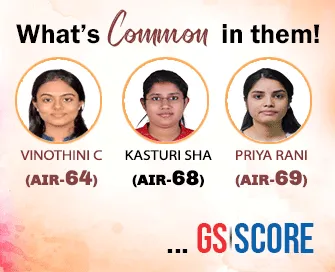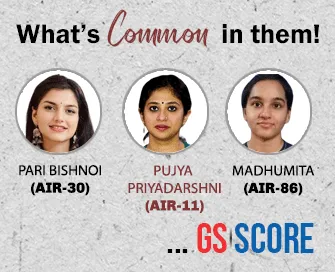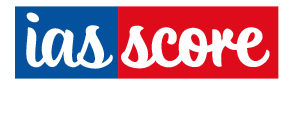

13th June 2025 (3 Topics)
Context
The U.S. Court of International Trade ruled that former President Trump’s sweeping global tariffs were unconstitutional and exceeded legal authority under the guise of a "national emergency." Though the ruling was stayed, it holds significant implications for India, which faces increased U.S. tariffs amid ongoing trade negotiations and the proposed One Big Beautiful Bill (OBBB).
U.S. Tariff Regime and Legal Challenge
- Presidential Tariff Orders and Global Fallout: Trump's executive action imposed tariffs ranging from 10% to 135% on imports from over 100 countries, including remote and non-commercial regions like Heard and McDonald Islands, breaching the norms of negotiated trade under WTO commitments.
- Violation of Separation of Powers: The use of executive orders to enforce such sweeping tariffs was termed by the court as upsetting the balance between the legislature, executive, and judiciary, which is fundamental to the U.S. constitutional framework.
- Five Small Businesses Took Legal Stand: Five U.S. SMEs — dealing in wine, plastics, bicycles, musical circuits, and fishing gear — filed a case in the U.S. CIT, asserting that the tariffs harmed their viability and lacked legal basis, leading to the May 28, 2025 judgment.
Fallacies in Trade Deficit Justification and WTO Disputes
- Misconstruing Trade Deficits: The Trump administration used global trade deficits as the basis for tariffs, ignoring that deficits do not inherently harm economic health and excluding U.S. service exports in its calculation, especially to countries like India.
- WTO Rulings on Steel-Aluminium Tariffs: In 2022, WTO panels (on complaints by Switzerland, Norway, China, and Türkiye) ruled that U.S. tariffs on steel and aluminium during Trump’s first term did not qualify under national security exemptions, yet theS. persisted.
- India-U.S. WTO Dispute and its Withdrawal: India filed a WTO dispute against the earlier tariffs but withdrew it in 2023 under a mutually agreed solution with the U.S. However, this did not shield India from additional tariffs (50%) under Trump’s new executive actions.
Strategic Implications for India and the Path Forward
- India Must Safeguard Digital and Visa Interests: India must ensure protection from U.S. retaliation on digital services taxes, 3.5% remittance tax, and H-1B visa restrictions, as these disproportionately affect India’s service trade and diaspora workers.
- Apple Manufacturing Threat Undermines India Advantage: Despite U.S.-China tensions, the Trump administration has threatened to penalize Apple if it shifts manufacturing to India, challenging the narrative that India could benefit from the U.S.-China decouplin
- WTO Alignment and Right to Walk Away: India must insist that any bilateral deal with the U.S. be WTO-compliant, especially on tariffs, remittances, and services, and be prepared to walk away from a sub-optimal trade deal given the potential for reversal of U.S.
Practice Question:
Q. "Discuss the implications of the recent U.S. Court of International Trade ruling on executive-imposed tariffs in the context of global trade norms. How should India balance its strategic and economic interests while negotiating bilateral trade deals with the United States?"


Context
As part of India’s urban transformation vision for Viksit Bharat by 2047, enhancing urban mobility has become critical. The 2024–25 Union Budget introduced new schemes like PM e-Bus Sewa and PM e-Drive to boost electric public transport. However, concerns persist over insufficient bus availability, high costs of metro projects, and the economic inefficiency of e-buses, prompting renewed interest in alternatives like trams and trolleybuses.
India’s Growing Urban Mobility Pressure
- Rising Urbanisation Trend: By the 2060s, over 60% of India's population is expected to shift from low-productivity rural areas to high-productivity urban regions. This large-scale intra-national migration will exert immense pressure on city infrastructure, especially transport systems.
- Gaps in Smart Urbanisation: India’s urban planning lags behind countries like China in developing new smart cities, forcing existing metros to expand uncontrollably. This unplanned expansion complicates worker mobility and escalates the strain on current transport networks.
- Limited Access to Public Transit: According to the 2024–25 Economic Survey, only 37% of Indian urban residents have access to public transport, compared to over 50% in Brazil and China. The lack of efficient last-mile connectivity further weakens overall mobility efficiency.
Current Policy Interventions and Their Limits
- E-Bus and E-Drive Schemes: The 2024–25 Budget launched the PM e-Bus Sewa and PM e-Drive schemes, targeting procurement of 14,000 e-buses and 1 lakh e-rickshaws/trucks/ambulances. However, India needs 2 lakh urban buses, while only 35,000 (including e-buses) are operational—just 17.5% of the requirement.
- Metro Network Investment vs Ridership Reality: Although metros receive significant government funding, most projects haven’t recovered fixed and operational costs due to lower-than-expected ridership. Commuters remain fare-sensitive, and poor last-mile connectivity deters metro use.
- Inadequate Subsidy Support: Unlike developed nations, India cannot offer large recurring subsidies to keep metro fares low. Hence, cost recovery and public usage remain key concerns in the long-term financial viability of high-cost transit infrastructure.
The Case for Alternative Transit Models
- Exploring Tram and Trolleybus Viability: Trams demonstrate 45% profitability over a 70-year lifecycle, while e-buses result in an 82% net loss due to high replacement and operating costs. Trolleybuses show minimal loss, making both options worthy of policy consideration for long-term sustainability.
- Budget Allocation Gaps and Private Sector Apathy: Despite increased budget allocations for e-buses, private sector interest remains weak due to uncertain returns. Policymakers continue focusing on costlier electric models, often sidelining cost-effective options like trams and trolleybuses.
- Learning from Kochi’s Tram Revival Plan: Kochi’s pilot initiative to reintroduce trams could be a landmark move, combining heritage revival with modern sustainability goals. Such models, if replicated, can reduce dependence on subsidies and offer a climate-aligned urban transport alternative.
Practice Question:
Q. “India’s urban transport policy remains overly focused on high-cost infrastructure without fully evaluating lifecycle costs and financial sustainability.” Critically analyse this statement in the context of e-bus systems, metro projects, and alternative modes like trams and trolleybuses.


Context
In June 2025, South Korea witnessed a major democratic milestone as Lee Jae-myung was elected President after former President Yoon Suk Yeol was impeached for attempting to impose martial law in December 2024 to bypass the opposition-led National Assembly. The peaceful transition following political chaos highlights the institutional strength of South Korea’s democracy, especially given its past under military dictatorship.
Breakdown of Democratic Crisis under Yoon Suk Yeol
- Attempted Martial Law Coup: In December 2024, then-President Yoon Suk Yeol tried to impose martial law with military backing to sideline the National Assembly and arrest key opposition figures like Lee Jae-myung. The move evoked memories of South Korea’s authoritarian past and faced widespread domestic resistance.
- Rapid Political Fallout: Yoon’s unconstitutional attempt led to public protests, political backlash, and ultimately, his impeachment. His party suffered a loss of credibility, and the constitutional order was restored through legal and democratic means within months.
- Democratic Strength Displayed: Despite the crisis, South Korea conducted free and fair elections on June 3, 2025. Lee Jae-myung secured 4% votes, defeating Kim Moon-soo (41.2%) in a peaceful transition, reinforcing the resilience of its democratic institutions.
Challenges and Mandate of President Lee Jae-myung
- Strong Legislative Backing: President Lee enjoys a majority in the National Assembly, providing legislative freedom to implement his agenda. However, he must ensure that accountability mechanisms do not devolve into political vendettas post-crisis.
- Economic Reforms and Stimulus Promise: With South Korea’s growth forecast slashed to 8% by the central bank in May 2025, Lee has pledged a stimulus package to revive the economy amid concerns over global trade slowdown and tariff pressures.
- Avoiding Political Polarisation: While it is essential to prosecute those responsible for the martial law fiasco, Lee must resist politicising justice. Democratic healing must prioritise transparency, fairness, and institutional restoration over revenge politics.
Recalibrating Foreign Policy and Inter-Korean Dynamics
- Realigning China-U.S. Balancing Act: Lee has reiterated that the U.S. remains South Korea’s core diplomatic partner, but he also seeks to repair strained commercial ties with China, South Korea’s largest trading partner, damaged under Yoon’s administration.
- De-escalation with North Korea: In a symbolic step to reduce tensions, Lee has ordered the shutdown of loudspeakers blaring K-pop and propaganda at the North Korean border, indicating a soft-reset in inter-Korean relations.
- Strategic Autonomy Goals: President Lee advocates a multi-vector foreign policy, aiming for regional peace and strategic diversification. While preserving the U.S. alliance, he aims to enhance ties with other powers to reduce over-dependence on any single axis.
Practice Question:
Q. “South Korea’s recent political transition demonstrates both the vulnerabilities and strengths of democratic institutions in post-authoritarian states.” Discuss in the context of the 2024–25 constitutional crisis and its impact on domestic and foreign policy.



